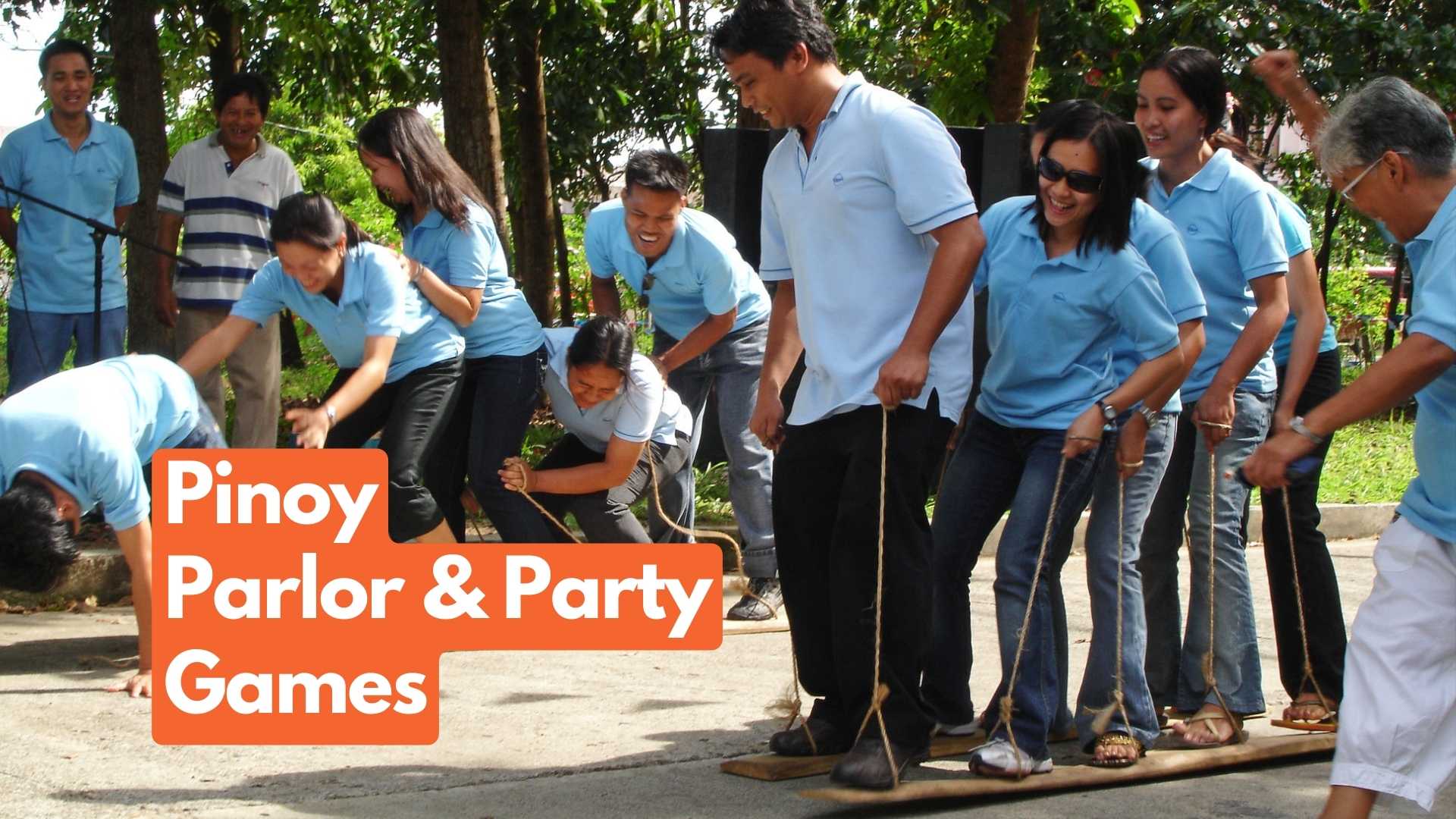
Unleash the Fun: The Ultimate List of Pinoy Parlor Games and Twists You Can’t Resist in 2023
Gatherings and celebrations are at the heart of Filipino culture, and Pinoy parlor games are a beloved tradition that brings people together, creating laughter and lasting memories. In this article, we’ll explore the classic, hilarious, and modern adaptations of traditional parlor games that are perfect for your next Filipino gathering. Let’s dive into these fun and engaging games that will surely delight everyone in attendance.
Classic Pinoy Parlor Games
Pinoy parlor games have been a staple at Filipino gatherings for generations. They foster camaraderie, friendly competition, and an atmosphere of fun and excitement. Here are three classic games that will never go out of style.
1. Trip to Jerusalem
Rules of the game: Trip to Jerusalem, also known as “musical chairs,” involves players walking around a circle of chairs while music plays. When the music stops, players scramble to find an open chair. The one left standing is eliminated, and a chair is removed for the next round. The game continues until only one player remains seated.
Tips for a fun and competitive experience:
- Use lively Filipino music to set the mood and encourage players to dance around the chairs.
- Arrange the chairs in a creative pattern to add an extra challenge.
- Encourage cheering from eliminated players to keep the energy high.
2. Pinoy Henyo
How to play Pinoy Henyo: In this classic guessing game, one player wears a headband with a word or phrase attached to it. Their teammate must give clues to help them guess the word without saying it directly. Players have a limited time to guess as many words as possible.
Popular categories and sample questions:
- Filipino celebrities
- Local delicacies
- Famous landmarks
- Philippine history
- Traditional customs and practices
3. The Boat is Sinking
Game mechanics and objectives: The game master announces, “The boat is sinking! Group yourselves into (a specific number).” Players must quickly form groups of the specified number. Those who fail to join a group are eliminated.
Strategies for teamwork and quick thinking:
- Encourage players to communicate and strategize with each other.
- Increase the challenge by varying the group sizes throughout the game.
- Allow eliminated players to help others find groups by cheering them on.
Hilarious Filipino Party Games
These amusing party games are sure to have everyone laughing and enjoying themselves at your Filipino gathering.
1. Calamansi Relay
The rules and benefits of this laughter-inducing game: In this game, teams race to pass a calamansi (or small lime) from one player to another using only a spoon held in their mouths. The first team to pass the calamansi to all its members without dropping it wins.
Tips for a safe and enjoyable relay:
- Use an open space to accommodate running and movement.
- Make sure there is enough room between teams to prevent collisions.
- Provide a clean-up station for any calamansi spills.
2. Newspaper Dance
How to play Newspaper Dance with a Filipino twist: Pairs of players must dance on a single sheet of newspaper while the music plays. When the music stops, they must fold the newspaper in half, and continue dancing on the smaller surface. The last pair still dancing on their newspaper wins.
Creative ways to increase the challenge:
- Use traditional Filipino music and dance moves.
- Incorporate various dance styles and techniques.
- Encourage players to wear traditional Filipino attire for added flair.
3. Bring Me
A classic Filipino party game for all ages: The game master calls out an item or description, and players race to find and bring that item to the game master. The first player to successfully bring the item wins a point. The player with the most points at the end of the game wins.
Suggestions for unique and amusing “bring me” items:
- A specific Filipino snack or delicacy
- An item with the Philippine flag on it
- A picture of a famous Filipino personality
- A traditional Filipino toy or game
Modern Adaptations of Traditional Parlor Games
These updated versions of classic games offer a fresh and engaging twist to traditional Filipino parlor games.
1. Pinoy Bingo
A cultural spin on the popular game of chance: Create bingo cards with images or words representing Filipino culture, such as local celebrities, traditional foods, and popular tourist destinations. Players mark off squares as items are called out, and the first player to complete a row or column wins.
How to create your own Pinoy-themed bingo cards:
- Use an online bingo card generator and customize it with your chosen images or words.
- Print and laminate the cards for durability.
- Provide markers or chips for players to use during the game.
3. Patintero with a Twist
An updated version of the classic Filipino street game: Patintero is traditionally played outdoors, but you can adapt it for an indoor setting by using masking tape to create the grid on the floor. Players must cross the grid without being tagged by the opposing team.
Strategies for an engaging indoor experience:
- Use music to set the mood and create a lively atmosphere.
- Implement a time limit to keep the game moving at a fast pace.
- Allow players to use creative tactics to avoid being tagged.
3. Sungka Showdown
The basics of the traditional Filipino board game: Sungka is a two-player game involving a wooden board with small holes or “houses” and shells or stones. Players take turns distributing the shells around the board, capturing their opponent’s shells to accumulate points.
Tips for hosting a competitive Sungka tournament:
- Organize a bracket-style competition with multiple Sungka boards.
- Offer prizes for the top players to encourage participation.
- Display a leaderboard to track player progress throughout the tournament.
Parlor Games for Special Occasions
These parlor games are perfect for adding a touch of Filipino tradition to your special events.
1. Pabitin for Birthdays
The history and significance of Pabitin: Pabitin is a popular game at Filipino birthday parties, where small gifts or treats are attached to a lattice or grid suspended from the ceiling. Children jump to reach the items as the grid is lowered and raised.
How to prepare and execute a memorable Pabitin game:
- Attach a variety of small gifts, toys, or treats to the lattice.
- Ensure the grid is securely suspended and can be easily raised and lowered.
- Encourage cheering and excitement from the audience to create a festive atmosphere.
2. Agawan Panyo for Weddings
The symbolism of Agawan Panyo in Filipino weddings: Agawan Panyo (handkerchief snatching) is a fun game often played at Filipino wedding receptions. It symbolizes the couple’s pursuit of a happy and harmonious life together.
Tips for incorporating the game into your special day:
- Provide a beautifully embroidered handkerchief as the game’s focal point.
- Invite guests of all ages to participate, creating a lively and inclusive atmosphere.
- Offer small prizes or tokens for those who successfully snatch the handkerchief.
3. Palosebo for Fiestas
The origin and significance of Palosebo: Palosebo, or greased pole climbing, is a traditional Filipino game played during fiestas and other celebrations. Participants climb a tall, greased bamboo pole to reach a prize at the top. This game symbolizes perseverance and determination in overcoming challenges.
How to organize a thrilling Palosebo race:
- Choose a sturdy and tall bamboo pole, ensuring it is well-anchored for safety.
- Apply grease or a slippery substance to make the climb more challenging.
- Attach a desirable prize at the top to motivate participants to reach the summit.
- Encourage cheering from the audience to create an exciting and festive atmosphere.
Tips for Organizing a Successful Pinoy Parlor Game Event To ensure your Pinoy Parlor games event is a hit, follow these tips for a well-organized and enjoyable gathering.
Preparing the venue and materials:
- Choose a spacious and comfortable venue that can accommodate all guests and game setups.
- Prepare all necessary game materials in advance, ensuring they are in good condition.
- Set up a designated area for each game to allow for smooth transitions between activities.
Setting the rules and choosing a game master:
- Clearly communicate the rules for each game to avoid confusion and ensure fair play.
- Appoint a charismatic and engaging game master to lead the games and keep the energy high.
Encouraging friendly competition and sportsmanship:
- Promote a spirit of friendly competition and teamwork among players.
- Recognize and celebrate the achievements of all participants, regardless of the outcome.
Ensuring a fun and inclusive atmosphere for all guests:
- Offer a variety of games to suit different ages, interests, and abilities.
- Encourage participation from all guests, including those who may be shy or hesitant.
- Create opportunities for guests to socialize and build connections through the games.
As conclusion.
Pinoy parlor games are a cherished aspect of Filipino culture, bringing joy and excitement to gatherings and creating unforgettable memories. By incorporating these games into your events and encouraging the younger generation to participate, we can keep the tradition of Pinoy parlor games alive and thriving for generations to come. So, get ready to laugh, compete, and bond with your loved ones over these fun and engaging Filipino games.
Note: Featured image credit to flickr.com. No copyright infringement intended.




